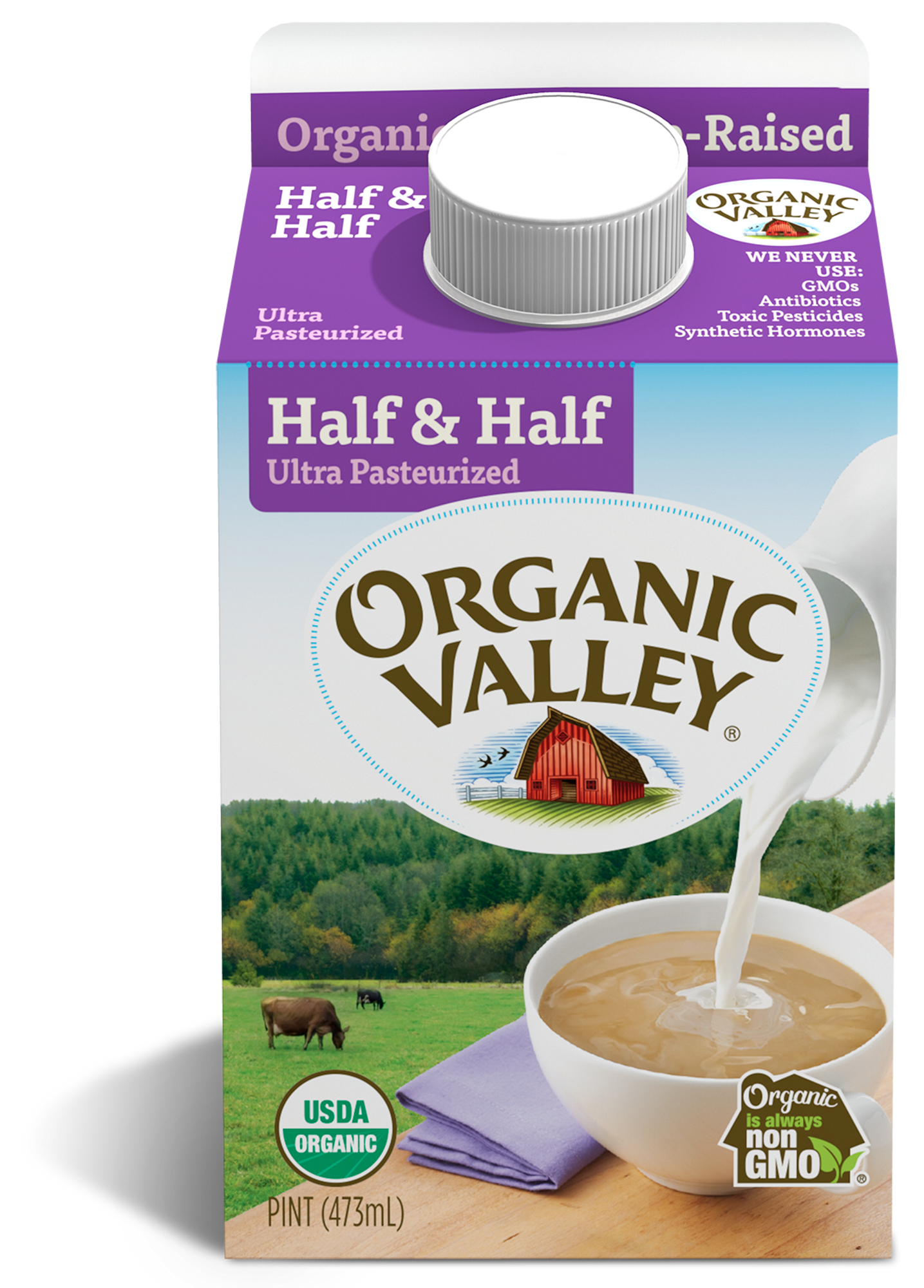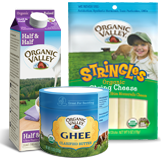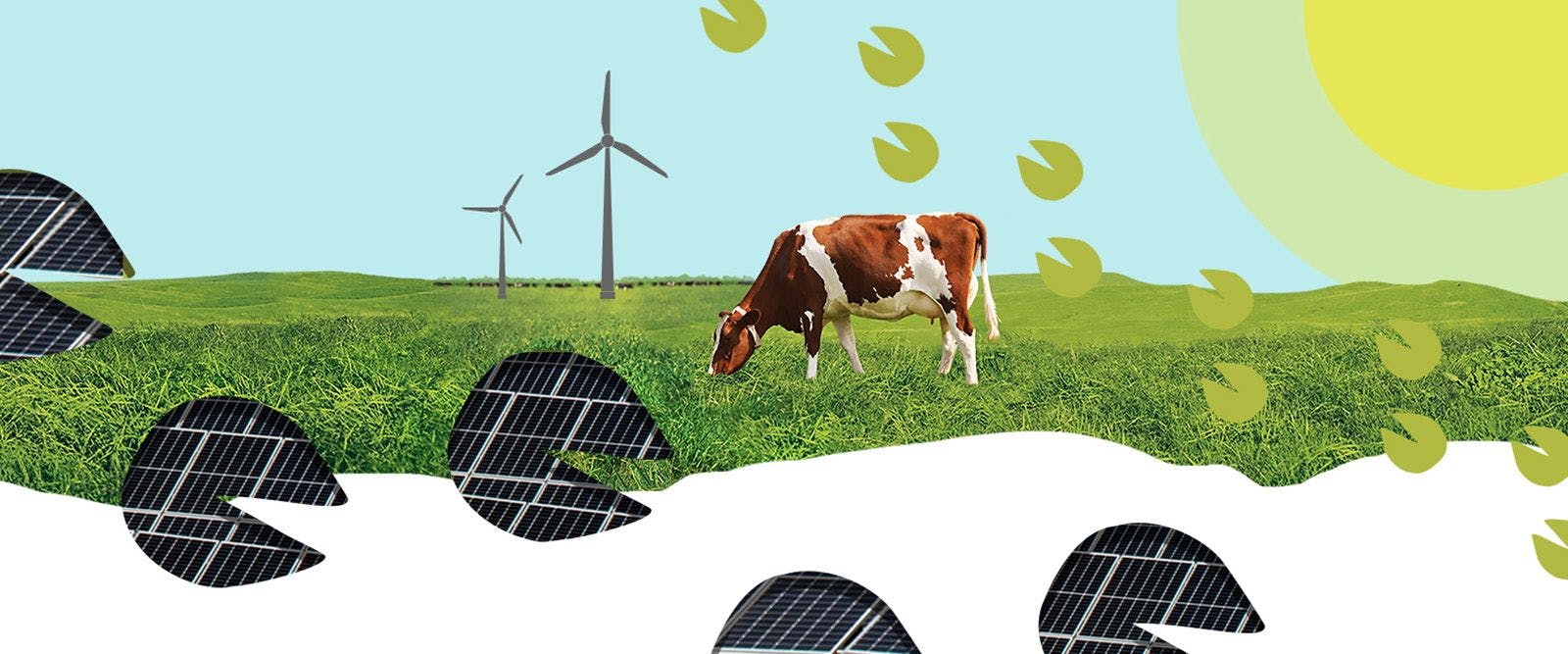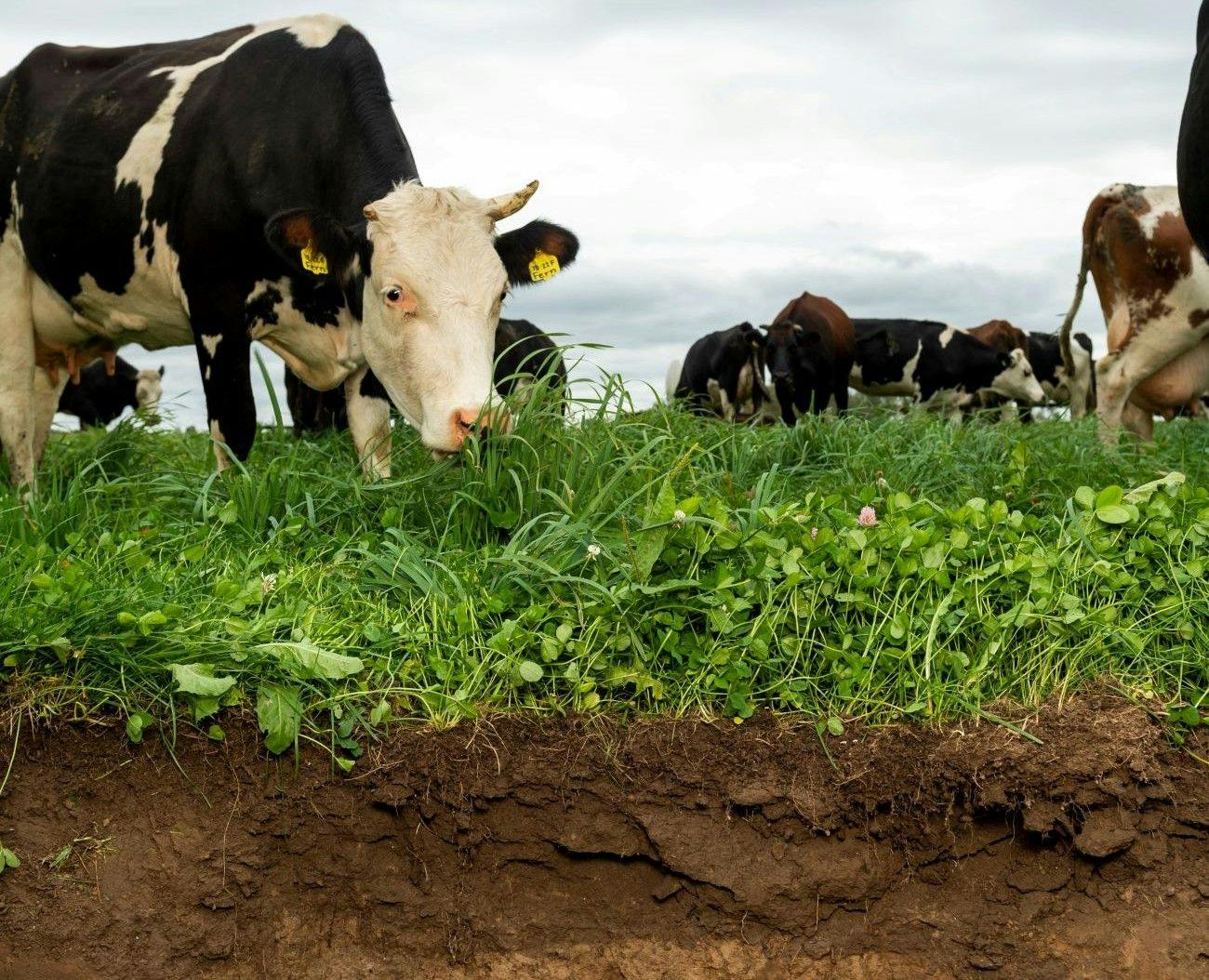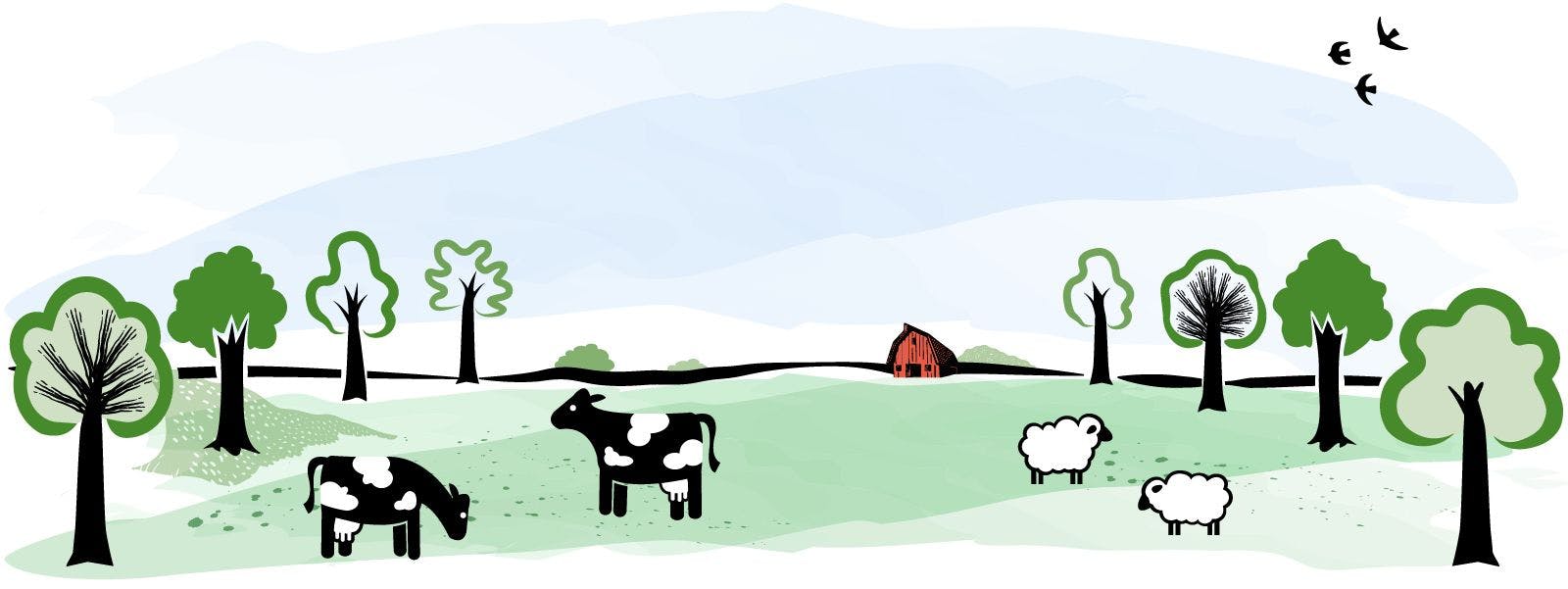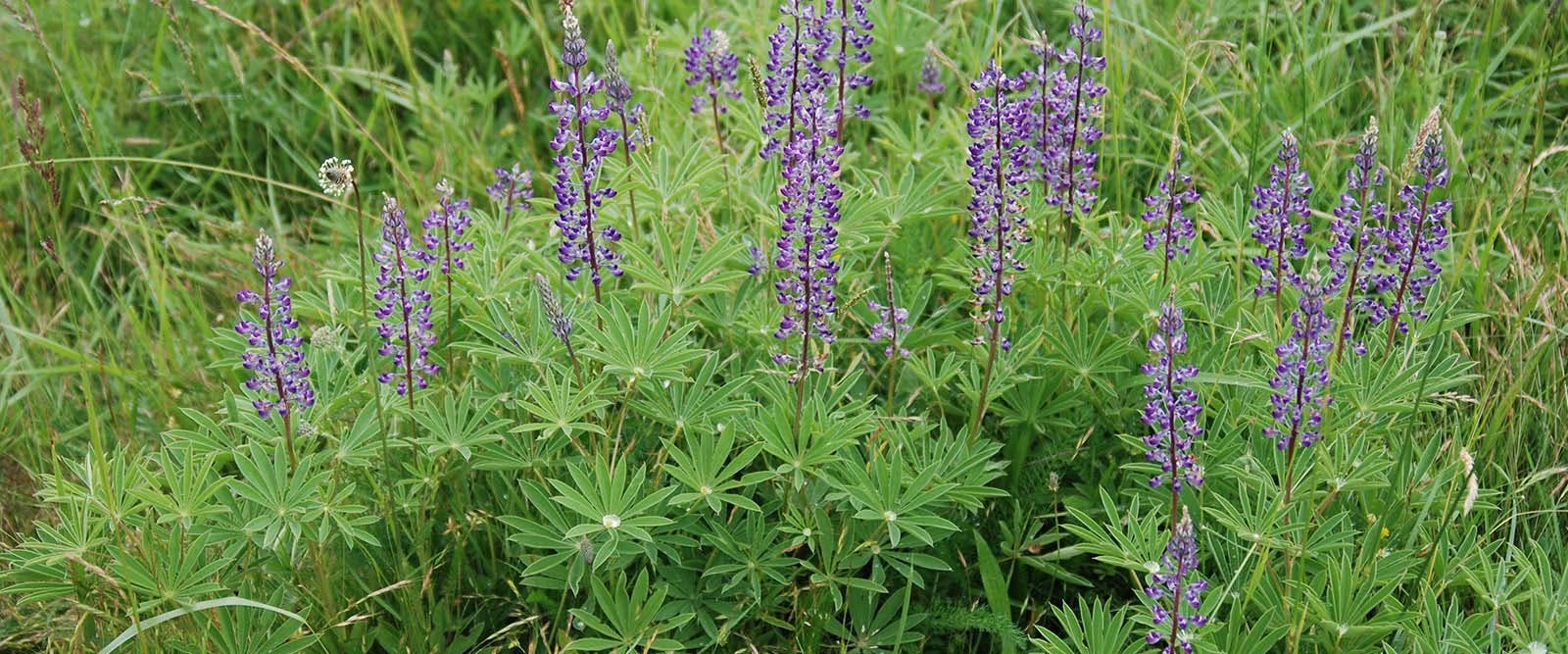
Earth
Dr. Erin Silva, 'Soil Whiz'
Dr. Erin Silva is an assistant professor in the plant pathology department at the University of Wisconsin – Madison. Her research and extension program focuses on sustainable and organic cropping systems, cover crops and cover-crop-based no-till production, and the impact of organic management on soil.
In short, Dr. Silva is kind of a soil whiz.
On this episode, Dr. Silva talks about how soil stewardship is a founding principle of organic agriculture and describes what good—and bad—soil stewardship practices look like. She digs into the ‘dirty’ details of tilling, explains how GMOs are linked to the soil loss happening as a result of conventional agriculture practices, and the new tools that are available to farmers who are concerned about soil health—including the Organic Grain Resource and Information Network, OGRAIN, Dr. Silva’s own initiative that helps give farmers the resources they need to protect the soil they depend on.
Plus, Dr. Silva—like many other Rootstock Radio guests—refutes the argument that organic agriculture cannot produce enough food to feed the world. (And she’s got more than a few carefully conducted studies to reference in defense of organic crop yield!)
Tune in to hear about
- Soil, soil, soil!
- Cover crops and other no-till methods of soil stewardship
- The ways our current agriculture system isn’t supporting soil health…
- The resources available to help farmers do better!
- How organic agriculture CAN feed the world
Listen at the link below, on iTunes, Stitcher, Google Play or wherever you get your podcasts.
Welcome to Rootstock Radio. Join us as host Anne O’Connor talks to leaders from the Good Food movement about food, farming, and our global future. Rootstock Radio—propagating a healthy planet. Now, here’s host Anne O’Connor.
ANNE O’CONNOR: Hello, and welcome to Rootstock Radio. I’m Anne O’Connor. I’m here today with Dr. Erin Silva. Dr. Silva is an assistant professor in the Plant Pathology Department at the University of Wisconsin–Madison. Welcome, Erin.
ERIN SILVA: Thanks, Anne, I’m thrilled to be here with you.
AOC: Yeah, it’s great to have you on the show. Dr. Silva is an assistant professor in the Plant Pathology Department at the University of Wisconsin–Madison. Her research and extension program focuses on sustainable and organic cropping systems, including cover crops and cover-crop-based no-till production, [and] the impact of organic management on soil biological and physical properties. Her teaching responsibilities include “Food, Sustainability and Climate Change” and “Organic System Health” over the years. Erin’s extension program houses a comprehensive organic grain production outreach initiative which aims to provide farmers the tools and the community necessary to grow the number of organic grain acres in the Upper Midwest. Erin also works closely with organic farmers and industry members, both in Wisconsin and across the country, and she serves as co-facilitator of the Wisconsin Organic Advisory Council.
So we’re talking all things organic here today, and you’re a great person for us to be talking about it with. Tell me, how did you come to the world of organics and what brought you there?
ES: That’s a good question, Anne. And I get asked that a lot—how the heck did I get where I am today? I was initially interested, going into college, in the environment and really fascinated with ecology and sustainability and stewardship of our land, and started off that way. And [I] had the opportunity, while I was an undergrad, to have an internship in an agricultural research lab and absolutely fell in love with it. [I] saw that as an incredible way to mesh my love for the environment and my desire to be a good steward of the land with food production and having an impact on not only our environment but our communities. So [I] kind of came in through the back door, so to speak; didn’t grow up in an agricultural family or environment, but definitely am so happy that I found my path and came to where I am today.
AOC: Right, so it’s an interesting thing. It really has become that food is connected to each and every part of any other system, right? So whether you’re talking about ecology or the environment, social justice issues, that food really has a place at the table in any one of these conversations.
ES: That’s definitely true, and I think that we’re realizing more and more just how complex those relationships are, and how much agriculture and how we grow our food is intertwined with the well-being of not only the animals and the fauna that is associated with an agricultural field and the surrounding lands, but also the microbes and the microbial life that is within the soil and impacts the plants and their health; and then further, the animals that eat the plants, and on to ourselves, too.
AOC: So there are some things that maybe it might be helpful to just sort of talk about, like, for example, the organic no-till. Talk about why this has become an issue for people. What’s the thinking around no-till farming? And what is it even?
ES: Sure, sure. So within our country and the natural resources that our vast lands have to offer, soil is certainly one of our most precious resources, and one that we often don’t immediately consider because it seems so ubiquitous. It’s always under our feet. It’s not something that we necessarily immediately notice when it’s degrading and that we’re having a negative impact. But through our agricultural practices and through our land use changes, we’ve had a significant impact on the quality of our soil resources across the country, particularly in some of our most heavily farmed agricultural areas, including in the Upper Midwest.
And I know sometimes, this time of year, when you go by a field and see the rivers that are close to land that’s being farmed, you can see the color of the rivers change. You can see them turning brown. And that color is due to the soil that’s being moved off of those agricultural fields into the waterways and then further down into the Gulf of Mexico, and causing some of the issues with water quality and the impacts on the aquatic life that we’ve heard about with the dead zones that occur in those areas. So we’re definitely having impacts.
And one of the foundations of organic agriculture, not only within our U.S. regulation but from the founding principles of organic agriculture, is soil stewardship. And there was a realization even a century ago that the soil and the health of our soil is key to maintaining healthy plants and a healthy environment.
So organic regulation and the practices that farmers do as part of their organic plan and their organic practices really are focused on maintaining and improving those soil resources that we so depend on for food production and food security and growing healthy nutritious food. So organic farmers, I feel so lucky to work with the group of people that I work with. They’re incredibly innovative and incredibly dedicated and passionate and want to do the right thing for their land. Unfortunately, there’s some tradeoffs, as there often are when we make decisions. And in organic agriculture we don’t use synthetic chemicals. We choose to use other ways to manage our fields, to limit diseases and pests through other means that involve diversity and other ecological means of managing the system.
But the ways that conventional agriculture has moved to reduce soil disturbance—and, to back up a step, when we look at the causes of soil loss that we see in our agricultural systems, why is so much soil moving from the land into our waterways or blowing away with wind? One of the key aspects that cause that detrimental soil loss is tillage. And tillage is the activity of soil disturbance. So when you see a farmer in the spring go over the land with a tractor and bring up that beautiful black topsoil to prepare the fields for seeding, whereas that creates a nice seed bed that allows the seed to pop out of the ground and the plants establish, it puts that soil at risk. So that was realized decades ago, and even from the time of the Dust Bowl, realized that we need to be limiting that source of soil disturbance and protecting our soil resources.
(9:02)
AOC: I want to just pause there for a moment, and just because it was such a profound lesson for us with the Dust Bowl. We lost how many feet of topsoil? And that doesn’t just come back, right?
ES: Yes, I mean, it’s not an easily renewable resource, certainly. It’s something that takes centuries to build. And it’s a resource that, once lost, is going to be very, very difficult to regain. So as we look at trying to maintain the soil in place and to prevent it from blowing away in the wind or being washed into our streams and rivers, one of the methods with which conventional agriculture has tackled that problem is to develop no-till systems that allow a farmer to limit soil disturbance and essentially go back into the same field without plowing or tillage, and plant the next crop directly into it. Unfortunately, to utilize those techniques, a farmer needs to spray herbicides. And that’s been one of the reasons that some of the genetically modified crops have been developed. It’s been an easy way to allow for that application of herbicide while managing a crop and a no-till method.
So, as organic cannot use those same tools but yet has a very strong commitment to conserving soil resources, we’ve been looking at ways to develop alternative no-till systems that, similarly to the conventional techniques, allow for minimal soil disturbance when planting a crop in the spring, but yet do that in a way that does not rely on herbicides and does not rely on genetically modified crops. So that’s been a very significant emphasis of my program over the last decade: developing systems that organic farmers can use to adopt no-till practices that are in line with the organic regulation and the philosophy of organic production.
AOC: Right. So you’ve talked already a fair amount about why soil matters, and you’ve talked about that in terms of keeping it in its place. But can you talk a bit about why soil matters in terms of growing plants? What’s the deal with soil? Why is it important?
ES: Sure. Increasingly, we are starting to recognize just how complex the soil environment is. Initially, I would say, in the middle part of the last century, I think most of, I guess, the conventional line of thought, so to speak, was that they viewed soil as more of a physical medium, a physical and chemical medium, and ignored the biological complexity of the soil and how that biological complexity plays a key role in really fostering a sustainable and resilient overall agricultural ecosystem. And as we’ve developed more tools and also as we’ve had more observation, including from organic farmers who’ve realized this for decades, that their soil and developing a healthy soil and adopting farming practices that foster healthy soil really lead to not only crop health but crop resilience. And as part of the university and as a university scientist, it is incredibly exciting to see the new tools that are developing that allow us to measure in the lab what organic farmers have been talking about now for decades, and really being able to understand it and describe more about the biological complexity that is present in the soil environment.
AOC: You know, Erin, one of the things that people talk about when they talk about organic is that the yields are less than in typical conventional systems. Now, there’s all kind of ways to measure and there’s all kinds of things to talk about, but what’s your reaction to that? And what does the soil have to do with yield and how we think about using a system?
ES: Mm-hm. And as any good scientist tends to reply to questions like that, my answer is “It depends,” when we talk about organic yields. Certainly, in many of the long-term studies that have been conducted not only in the Upper Midwest, including Wisconsin and at Iowa State University, but also internationally in Europe, we’ve seen that organic yields, particularly with our grain crops and our forage crops, can be equivalent to conventional yields. So the argument that organic cannot feed the world, the data that we see from these long-term trials tends to refute that. Here in Wisconsin we see organic corn and soybean yields reaching 95 percent of conventional crops grown side by side. And at Iowa State, Pennsylvania, they see those same sorts of results, that organic can, in terms of our corn and our soybeans and our cereal grains and our alfalfa, yield very, very well over a sustained period of time. So we’re talking 25, 30 years of organic production.
(15:18)
AOC: If you’re just joining us, you’re listening to Rootstock Radio. I’m Anne O’Connor, and I’m here today with Dr. Erin Silva, the assistant professor in [the] Plant Pathology Department at the University of Wisconsin in Madison. We’re talking about plants, we’re talking about organic systems, we’re talking about soil. So we were just talking about that organic research shows that yields aren’t necessarily much less than in conventional systems. And yet this whole idea of organic not really being a robust enough system to feed the world persists. What could be holding us up on that thinking?
ES: And I have to agree with the criticism that many farmers have aimed to our land grant systems, that our land grant universities and our research have been behind in terms of looking at organic agriculture and really understanding the benefits of organic agriculture, and being able to generate and provide the data that helps demonstrate that. Organic agriculture, while organic farmers have been farming organically—gosh, in the U.S. since 1960s, 1970s, we had some of the first state-based certification programs, and there’s long-term organic farmers that I work with that have been doing it for 30 and 40 years that are incredible farmers that have been managing their land, using organic practices, for decades now. At the university it’s still a fairly new line of research for us. We’ve had more recent investments from the USDA, from our United States Department of Agriculture, and some federal grant money to help support doing this very, very important research to help us understand and demonstrate and to also improve our organic practices. But we’re definitely still behind, unfortunately.
AOC: Right, so there’s so much to learn, and organic research is really at its infancy still. And the organic industry in food is the fastest growing segment of the food industry, but the reality is it’s still only at about 5 percent of the food industry. So the resources that are allocated to organic research reflect that very small percentage, right?
ES: Which is frustrating but true, unfortunately.
AOC: And yet what we’ve seen over and over again is the work that you’re doing in pasturing and in soil, that is being used outside of organic systems too, right? Talk about the ways that organic production is influencing the whole agricultural system.
ES: Exactly. I mean, that very much is a phenomenon that I’ve been recognizing, especially over the past two or three years, where even through the conventional farming sector there’s this importance of soil, and the importance of practices that foster and improve soil life are increasingly being recognized, again, even through the conventional agricultural sector. So more and more, I think, conventional farmers are turning to these practices that organic farmers have really pioneered and have been adopting for years, including the use of cover crops, which are crops that are grown between our cash crops. So between the crops that they harvest, they plant an additional crop that is essentially food for the soil, keeps the soil in place physically by having plant roots and plant growth above the soil and those roots. And when that aboveground biomass is returned back into the soil, it’s food for all those microbes that, again, we know more and more are playing a critical role in terms of our agricultural ecosystems.
But that that technique is spreading across the conventional agricultural sector, and with the increasing presence of herbicide-resistant weeds and the breakdown of some of the herbicide tools that conventional farming has relied upon, some of these organic no-till techniques and organic weed management techniques are being increasingly adopted by conventional farmers that are realizing that they do need to use more of a systems-based approach for weed management and not be reliant on a chemical regime for their management in terms of making sure that the weeds are kept down in the fields.
AOC: So that’s things like cover crops, and rotating which crop you put in the field so the pests don’t gang up on the plants, and all these different things that come directly from organic, and we’re seeing other people adopt these things.
ES: Exactly. And it is exciting to see those techniques being more adopted across the landscape. Certainly not as much as we’d like to see, but there is an increased recognition that these are important practices that do have value and that do work.
AOC: So I want to talk a little bit about grains. You’ve done a lot of work with grains. You’ve done a lot of work in row crops, corn and soybeans, cereal grains, vegetable crops too. But you have this outreach initiative OGRAIN—the Organic Grain Resource and Information Network. Can you talk about what that initiative’s goals are and what you do there?
ES: Yes, one of the things that had been observed over the past few years is that while increasingly consumers are turning to organic and looking for organic on the grocery store shelves and companies are increasing their organic product lines, there was not the supply of domestic grains that were necessary to feed this increasing demand, so to speak. So buyers were having to turn internationally to get the product to meet the demand within the U.S. So, seeing this as an opportunity for not only our existing organic farmers but an opportunity for more farmers to turn to organic as a viable opportunity and a viable way to farm that creates a market with a good price for their product, we decided to develop an initiative to give the tools and the resources to farmers—again, both existing organic farmers and those just turning to organic—to successfully be able to farm organic grains and to meet this increasing demand.
And one of the things that we looked at to try to figure out, if there is this opportunity, why aren’t more farmers farming organically, one of the things that we saw and heard as a concern from farmers was that there wasn’t a lot of resources to help them learn how to farm organically and to connect with each other to learn about where is the newest innovation, and how are people getting things to work, and what varieties are people seeing working in their field, and what pieces of equipment, and what sort of weed management strategies. And that sharing of information between farmers is just absolutely critical to ensuring that people are successful. Creating that community where people learn from each other, and then bringing in experts, as is appropriate, to additionally create more resources and more learning opportunities.
So that really is the, I guess, the root of OGRAIN, is to create that community and create those resources to let people be successful in organic farming and meet this increasing demand for organic grain. Which is not only larger-scale crops like we may think of with corn and soybeans and wheats, but also the opportunity for farmers to grow organically more and more for specialty markets, for the increasing interest and demand for ancient grains like spelt and einkorn and emmer, or specialty wheats that go into bakeries and specialty breads and pastries. There’s just so much opportunity on so many different scales that farmers can take advantage of if they have the tools and the resources and community to do so.
(24:35)
AOC: Right, so organic is a system that has been designed and created and run by human beings. So people sometimes say, “Well, people are just going to cheat.” And there is maybe a small percentage of people who will cheat on the standards. Last year we did have a circumstance in which, to feed that grain need for the rapidly growing organic industry, we had some grain that came in from out of the country—the imports that you were talking about—and it was found out to be not organically grown. Can you tell us about, how common do you think that is, and are there things in place that we can really be assured that when we buy something that’s organic that it is actually organic?
ES: I still have a lost of trust in the organic label and organic integrity and the commitment of the organic community, and especially the organic farmers. I mean, certainly as you mentioned, it’s a certification and regulatory structure that is run by people, and it’s not necessarily going to be a perfect system. From the numbers that I’ve seen, that those imports have slowed overall, but certainly the fraudulent imports. And again, increasingly recognizing the importance of turning to our own farmers here in the Upper Midwest to fill that demand for organic grains. The commitment and the reaction of the organic industry realizing that consumer confidence and integrity is just critical to maintaining the organic label, and that it was addressed swiftly and has continued to be addressed, and solutions continue to be evolving to ensure that that does not happen again.
AOC: Right, and I think it’s just so good to talk about, because there are things that go wrong and every system needs to have a system of checks and balances. And the organic label has, more than almost any other agricultural system that we have in place right now. And yeah, I think consumer confidence is high for the organic label. Even though it may be true that also, at the same time, that people don’t necessarily have this deep well of understanding about what the rules are, I think there’s a lot of trust that this is a system that has been created thoughtfully and that people are producing food in ways that are beneficial to every part of the system—from the soil to the plant to the animal to the farm workers, to the community that we’re in, and to the eater, right?
ES: Every day I feel so lucky that I get to work with this group of just passionate and committed people looking to improve our food production systems. And that certainly starts with the farmers, the incredibly committed and skilled and innovative organic farmers that we have here in Wisconsin.
AOC: Erin, thank you so much for joining us today and talking to us about your work in the organic world and helping farmers increase organic acres across the country. If our listeners wanted to know more about your work, is there some place they could go to take a look?
ES: We do have a website, UWOrganic.wisc.edu, and [you] can look at some of our research there.
AOC: Great, thanks so much.
ES: Thank you!
AOC: And thank you, listeners, for joining us today. Remember, Rootstock Radio is also available on iTunes, Google Play, RadioPublic, and Stitcher. If you haven’t subscribed yet, it’s really easy. Just go to iTunes or Stitcher, search for Rootstock Radio, and click “Subscribe.” We’ll see you next week.
You can listen to Rootstock Radio on the go wherever you get your podcasts, and find us online at RootstockRadio.com. Rootstock Radio is brought to you by Organic Valley.
Related Articles
- Tags:
- land stewardship & conservation,
- soil health & science






